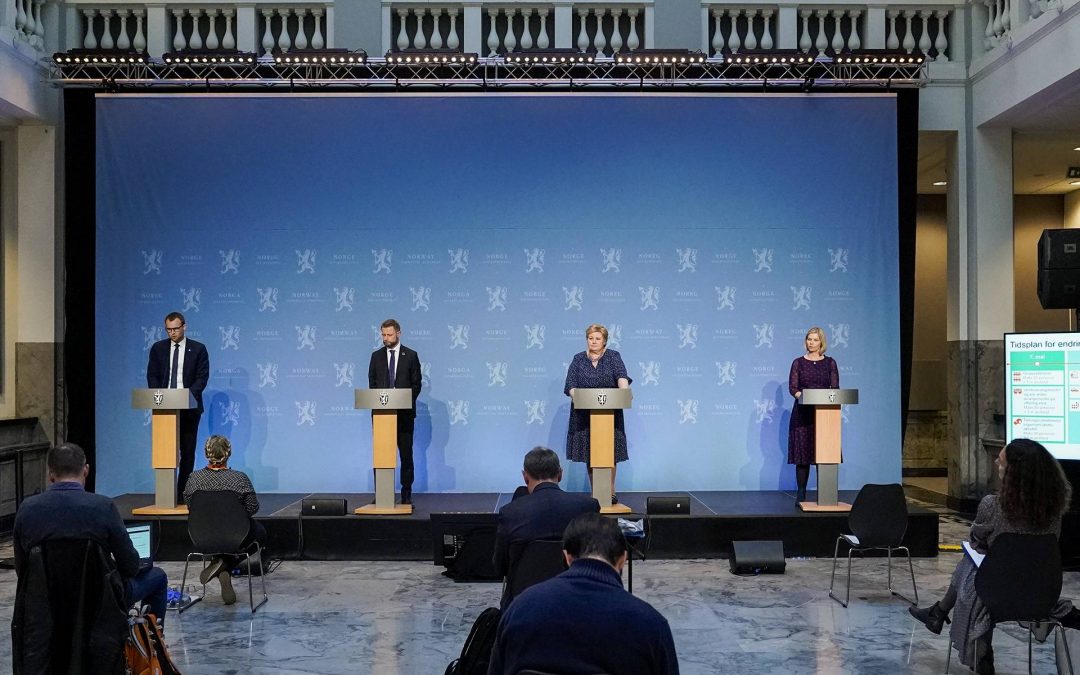During times of crisis, citizens tend to increase their support and trust in political leaders, a phenomenon commonly known as the “rally-round-the-flag” effect. New research co-authored by Erik Knudsen sheds light on why and under which conditions the rally effect of international emergencies – the case of the COVID-19 pandemic in Norway – also pertains to the news media.
Numerous studies have demonstrated that acute crises engender cohesion and lead to an increase in citizens’ approval of political institutions, a phenomenon commonly known as the “rally-round-the-flag” effect. While the phenomenon has been extensively studied in relation to political leaders, research shows that the rally effect can also extend to the news media.
“Exogenous shocks, such as large terror attacks, wars or global pandemic like the COVID-19, have proven to cause the public opinion to become more favourable towards political actors. Previous research has established that rally effects are far from exclusive to the approval of political leaders and the government, and also apply to the news media. What has been ambiguous, however, are the reasons behind citizens’ increasing trust in the media during times of crisis», says MediaFutures’ researcher Erik Knudsen.
In a recent study published in the esteemed journal Political Communication, Knudsen and his colleagues address the very question of why rally effects of international emergencies – the case of the COVID -19 pandemic in Norway- extend to trust in the news media on the institutional level.
Assessed citizens’ trust in the news media over time
To study rally effects on media trust, the researchers utilized data from the Norwegian Citizen Panel. Knudsen explains: “We leveraged panel data from five different waves of the Norwegian Citizen Panel – which ran in January, March, June 2020, January 2021, and January 2022. This left us with a pre-crisis baseline (January 2020), a measure during the initial stage of the Corona pandemic (March 2020), and three measures at later stages of the crisis (June 2020, January 2021, and January 2022). By examining the five panel waves, we were able to determine whether citizens’ trust in the media has changed from before the pandemic to after the COVID-19 outbreak.”
The study revealed that the public demonstrated higher trust in the media after the country shut down, and that the heightened level of media trust lasted until the researchers’ last measurement in January 2022. In the search for explanatory factors, the authors discovered empirical evidence supporting two rationales for the citizens’ increased trust in the media. Firstly, the perceived significance of news during times of crisis; and secondly, the so-called trust nexus, which refers to the relationship between media trust and political trust.
On the former, Knudsen elaborates as follow: “We posited that the rise in trust towards the news media can be attributed to their significance as a primary source of information. For a considerable number of individuals, the news media served as the predominant avenue for learning about the government’s response to the crisis and its evolution over time”.
Regarding the trust nexus, the scientists delved into the potential correlation between political trust and trust in the news media, postulating that an upswing in trust towards politicians could potentially result in corresponding increase in trust towards the news media.
To determine whether this could indeed be the case, the authors involved ran cross-lagged models, and found clear indications of reciprocal effects. Knudsen notes that a possible explanation for this finding is that the surge in trust in both the media and the politicians occurred nearly simultaneously: “Institutional trust tends to rise after the public learns about the government’s response to a threat, the pandemic in this case. As this response is often conveyed to the public through news media outlets covering press conferences, it is likely that the surge in trust towards both politicians and news media occurs almost concurrently “, adds Knudsen.
The study also found that certain demographic groups exhibited greater propensity for increased trust in the media than others. These groups comprised individuals with a moderate level of education and those who could be categorized as being at risk of a severe COVID-19 disease course.
You can read the full research paper, in pdf format, here.
Picture: NTB Scanpix

